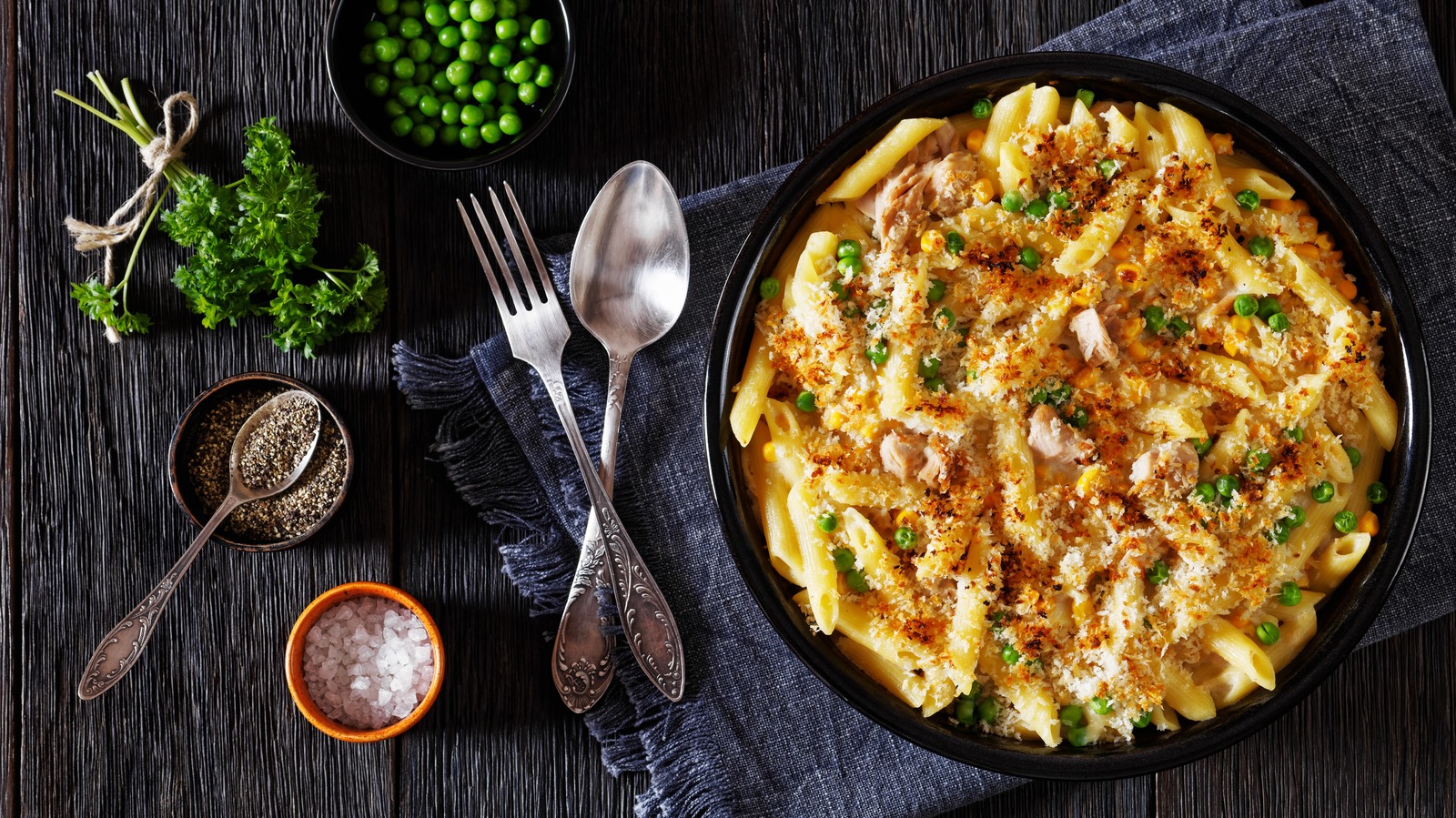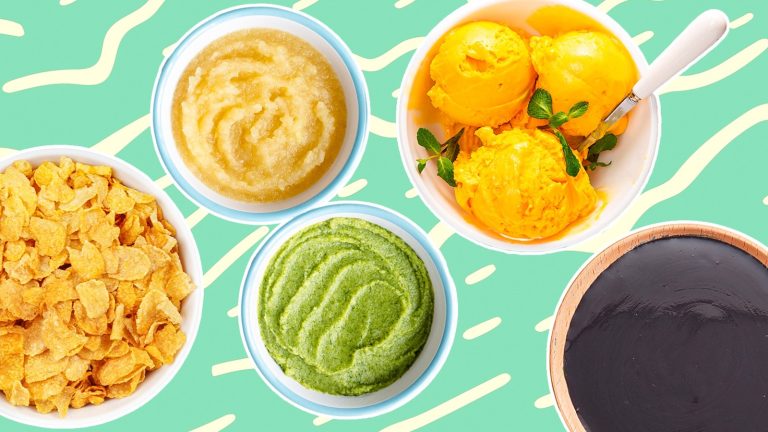Baked pasta, aka pasta al forno, is an Italian dish that was first popularized in southern Italy but spread throughout the country, eventually becoming well-known and loved in kitchens around the world. Nowadays, there are many baked pasta dishes, each with an innumerable amount of recipes. You’ve got lasagna, cannelloni, ziti … if you are pasta savvy, you’ll notice the recipes are generally named after the type of pasta used in the dish. Others, like manicotti and mac and cheese, are more Americanized versions.
While there are specific recipes with various types of veggies and meats, a basic al forno dish is made with three main ingredients: pasta, sauce, and of course, cheese! You might be tempted to stick with the classics we all know and love. And while mozzarella, ricotta, cheddar, and Parmesan, are fantastic choices, there are over 2,000 types of cheese to choose from. It’s time to explore the big wide world of cheese, and this versatile recipe is a great place to start. Read on to learn about 14 cheeses you should add to your next pasta bake.
1. Gorgonzola
Gorgonzola originates from, you guessed it, the province of Gorgonzola in Italy and is made from cow’s milk. With distinctive blue-green veins running through it (the product of fungal spores), it makes sense that Gorgonzola belongs to the blue cheese family. A strong starter for our first suggestion on this list, it is an acquired taste but on the milder side compared with other blue cheeses. Depending on the length of the aging process, this cheese will taste different. Gorgonzola dolce, the younger of the two, boasts a creamy and soft texture that is milky and slightly sweet in flavor, while Gorgonzola piccante is crumbly with sharp, spicier notes. Traditional Gorgonzola is PDO (Protected Designation of Origin) certified. Check the label of your cheese to make sure you’re buying the real deal.
Gorgonzola Dolce is preferable for pasta bakes as it easily melts. The key to adding Gorgonzola is getting the balance right, without overpowering the dish. Pair it with a milder cheese like mozzarella or Fontina, both of which will soften the taste of the Gorgonzola. A great place to start is with mac and cheese. Substitute a mix of Gorgonzola dolce and Fontina for whatever cheese you normally use when making this dish, or add it along with cured meats to any basic pasta bake.
2. Paneer
Hailing from India, paneer is a fresh cheese, meaning no aging is required. Similar in taste to ricotta or cottage cheese but with a firmer texture, paneer can be made from a variety of animal milks including cow, goat, and buffalo. Lemon juice or similar acidic ingredients are used to curdle the milk before drying and pressing it. Paneer can be eaten raw or cooked and is an excellent source of protein.
If this is your first time cooking with paneer, here is some advice: Soak it in water before cooking and make sure you don’t overcook it — two steps that can stop it from becoming rubbery. Place paneer chunks on the bottom or top of a tomato-based baked pasta for a culinary fusion. Consider adding seasonings like curry powder, ginger, cumin, turmeric, and coriander. Take this flavor combo all the way by making a traditional Indian tomato sauce to pair with your dish.
And don’t be shy when it comes to cheese. Paneer pairs well with cheddar, mozzarella, and even cream cheese. If you want more of a cheese sauce for your baked pasta, you can blend paneer on its own or with any other ingredient that has the flavor profile you want.
3. Ossau-Iraty
When was it decided that Parmesan would get the monopoly when it came to cheesy garnishes? There are many cheeses that can be grated on top of your favorite salad, soup, pizza, or baked pasta. It’s time to switch it up. Enter Ossau-Iraty, a semi-hard cheese from the French Pyrenees, made with milk from a few specific local sheep breeds. The fully matured cheese wheel sports a speckled amber rind.
Sweet, rich, and nutty with the occasional floral note, it is firm in texture and a great cheese to use in place of Parmesan. Grate a generous amount on top of ricotta-stuffed shells, lasagna, or baked tortellini and get ready to kiss your Parmesan-only days goodbye. Like many others on this list, Ossau-Iraty is AOC (Appellation d’Origine Contrôlée) protected, meaning its production must meet strict regulation guidelines — but that’s what makes it so incredibly good. Only true Ossau-Iraty will have the AOC label.
4. Camembert
Camembert is a soft, spreadable, and almost paste-like rind cheese similar to Brie. Traditional Camembert comes from Normandy, France, and is AOC protected. Like most cheese, it is made by fermenting milk, typically from cows. The more Camembert is left to age, the creamier in texture and earthier in flavor it becomes. The taste is also altered by what the cow eats, as different types of vegetation have different effects on the milk. An edible mold called penicillium candidum ripens the cheese and creates the rind.
Camembert is particularly delicious baked and makes any common dish taste instantly fancy. The soft texture is incredibly luxurious and is a wonderful choice for a more flavor-packed baked pasta dish, as it pairs well with many ingredients like other cheeses, spinach, prosciutto, rosemary, and garlic. You can lean into the creaminess and add double cream or heavy whipping cream. Otherwise, it is just as wonderful in a simple pasta bake with just cheese and garlic. Put it in whole, rind and all, or scoop out the creamy interior, depending on your preference.
5. Mozzarella
Let’s be clear: We aren’t talking about the American version of mozzarella. This is no pre-shredded cheese drying out in a plastic bag. Fresh mozzarella is 100% better! It is made from cow or buffalo milk and comes in balls that are preserved in whey. It is soft, delicate, and sure to elevate any baked pasta dish. Plus, it is relatively low in fat, making it a great choice if you are looking for a healthier option on this list. You can also make your own mozzarella right at home using cow’s milk.
Fresh mozzarella is easy to prep; just tear it apart by hand, roughly chop it, or slice slabs and sprinkle them on top of any tomato sauce pasta bake. Or the next time you make a lasagna, upgrade it and use fresh mozzarella. We are willing to wager you will never go back to the plain old plastic bag variety ever again.
6. Taleggio
Its smell might initially put you off, but don’t let the pungency of Taleggio scare you away. It’s actually quite mild in flavor, with a tangy, buttery, and slightly meaty taste and creamy texture. The Taleggio valley in Italy is its namesake, and the local cow’s milk is the main ingredient. The cheese features a coarse rind, which is routinely washed during aging to promote optimal mold growth.
Since it’s a semi-soft cheese, it’s best to use supplementary ingredients with Taleggio to get the desired creamy texture needed for a great pasta bake. This could be incorporating other cheeses or using flour and milk to make a cheese sauce. For a smooth result, remember to remove the rind. We love Taleggio with cured meats, like pancetta, prosciutto, speck, jamon iberico, and coppa for example. Add these salty meats to any cheesy baked pasta for the ultimate comfort food recipe.
7. Gouda
The city of Gouda in the Netherlands is the birthplace of this widely popular cheese. Young gouda is a creamy and mild cheese, perfect for pairing with other cheeses like mozzarella, Parmesan, and cheddar. If you want to kick it up a notch, use aged or smoked gouda. The former has a strong, rich, almost butterscotch-like flavor. The smoky flavor of the latter is typically accomplished by smoking the cheese using wood chips.
“How-da” as the Dutch pronounce it, can be used in a vast array of pasta bakes, like baked ziti and fettuccine to name a few. We especially love smoked gouda with mac and cheese, making for a creamy and flavor-packed version of this classic bake. Gouda pairs exceptionally well with mushrooms and sausage so be sure to add them to the mix. You can even make your pasta bake a little spicy by adding chili powder, as gouda handles spice surprisingly well.
8. Comté
Have you ever heard of mountain cheese? It’s Comté’s nickname since it’s made in the mountains of France near the Swiss boarder. Made from unpasteurized cow’s milk, there are four distinct versions: young, aged, summer, and winter. Younger cheese is milky and fresh; aged is nutty, fruity, and sweet; summer is earthy; and winter is mild.
Young Comté cheese is great for melting, so let it be the star of the show in your next pasta bake. Pair it with spinach, bacon, and broccoli to add a little more depth of flavor. Add thick-cut bacon for an extra yummy mac and cheese. You’ll have to grate or roughly chop it into smaller, easy to melt pieces. Don’t have a cheese grater? A vegetable peeler can serve as a fantastic dupe. It’s also great for shaving off aged Comté, which is harder in texture and works well in place of Parmesan. Sprinkle some panko breadcrumbs on top as well for an extra crunchy topping.
9. Burrata
Burrata is truly a unique cheese with a slightly tangy taste, almost like yogurt. It might be mistaken for plain mozzarella at first glance, but it has a little surprise inside: an almost liquid mixture of heavy cream and mozzarella, called stracciatella. True mozzarella is only made from Italian water buffalo’s milk, whereas fior di latte, a similar product, is made from cow’s milk. Both mozzarella and fior di latte can be used to make burrata.
Instead of adding mozzarella on top of your baked ziti, try this Southern Italian delicacy. Burrata pairs incredibly well with vegetables like bell peppers, zucchini, and even pumpkin, which is particularly heavenly in the fall. Add your veggies of choice and then simply tear the burrata over your dish before popping it in the oven to bake. You’ll know when it’s done because the burrata will start to bubble and turn golden brown.
10. Halloumi
Popular in East Mediterranean cuisine, halloumi might seem like an odd choice as it doesn’t really melt. But hear us out! Halloumi is high in protein and can be used as a meat substitute in your pasta bake. Simply cube it and give it a light fry. The tangy and salty taste paired with a slight crunch is a hearty addition to any baked pasta dish. You can even soak it in stock before frying it, adding to the savory taste and furthering its meat simulation. Pair it with olives, zucchini, and garlic for a truly Mediterranean-inspired baked pasta.
Halloumi to the Greeks and hellim to the Turks, this semi-hard cheese is originally from Cyprus. Traditionally, it is a mixture of curdled goat and sheep’s milk. Once ready to eat, it can be kept in its natural juices or stored in fresh mint leaves, although the latter is an old custom and not commonly practiced today.
11. Feta
Thanks to a baked pasta recipe that went viral on TikTok, this Greek cheese has gained fame and increased in popularity in recent years. Feta is made from sheep and/or goat’s milk. There are many dupes made outside of Europe featuring cow’s milk that are technically not feta. Another key difference is true feta requires two months or more to fully mature. Taking this one step further, technically, any feta produced outside of certain parts of Greece isn’t considered feta. This is because it is on the PDO (Protected Designation of Origin) register.
Known for its briny taste, feta pairs well with baked tomatoes, a key ingredient in that TikTok recipe and part of the reason it was such a huge hit. It’s also great in stuffed shells and mac and cheese. No matter the dish, when using feta, top it with fresh basil. Sorry Italy, but we think feta and basil is mozzarella and basil 2.0. Opa!
12. Emmentaler
The only cheese that ever seems to exist in cartoons, Emmentaler is best known for its characteristic wholes or eyes. A mild type of Swiss cheese with a buttery and nutty flavor, authentic Emmentaler comes from the canton of Bern and some parts of the canton of Fribourg in Switzerland. Emmentaler is made into eight varieties, each with a different length of maturation, then shaped into enormous wheels. It has also been AOP protected since 2000.
Emmentaler is a great cheese for a broccoli pasta bake with a crumbly bread topping. Adding spices like nutmeg or even cinnamon really helps to enhance its deep flavor. Another option is a pasta bake with wide noodles, like egg noodles, allowing for more cheese to make it into every bite. Throw in some ham for an extra kick of protein. We also love it as a stand alone in mac and cheese.
13. Asiago
Buttery with a hint of sharpness and a fresh cream finish, Asiago is a semi-hard Italian cheese. The more it is aged, the more buttery, nutty, and crumbly it becomes. There are a variety of aged Asiagos but all will add decadence to your pasta bake. It shines most when combined with other cheeses, boosting the flavors of its comrades and allowing you to really indulge in the rich, creaminess of any pairing. Sharp cheddar, cream cheese, or crème fraiche are among our favorites. Add them to your bake for an irresistibly rich and velvety finish.
The traditional variety of Asiago is made in Asiago, Italy, from a mix of whole and skim milk. Both fresh and aged Asiago are available; the former being soaked in brine and the latter put in a mold to dry-age before also being soaked in brine. Although both are delicious, aged Asiago is best for baked pasta dishes.
14. Extra sharp cheddar
Cheddar cheese is already a popular option often used in baked pasta recipes. But extra sharp cheddar is the aged, less common version that has a huge flavor payoff. Cheddar receives this title when it has been aged for at least 12 to 15 month. It has an intense flavor and a punchy tanginess that can’t be ignored. It is also firm and grainy thanks to more enzymes being produced by bacteria during the aging process.
The intense, longer finish of this cheese makes sharp cheddar and fresh grape tomatoes a tasty match. Grape tomatoes feature heavily in the viral feta baked pasta recipe mentioned earlier. Simply replace the block of feta with a block of extra sharp cheddar for a new spin on the dish. When it comes to mac and cheese, however, we suggest you stick with milder cheddar. There are many ways to ruin mac and cheese, like overmixing and using the wrong type of cheese. Due to the longer aging process, extra sharp cheddar is more oily and won’t produce that smooth and creamy effect desired in mac and cheese.





